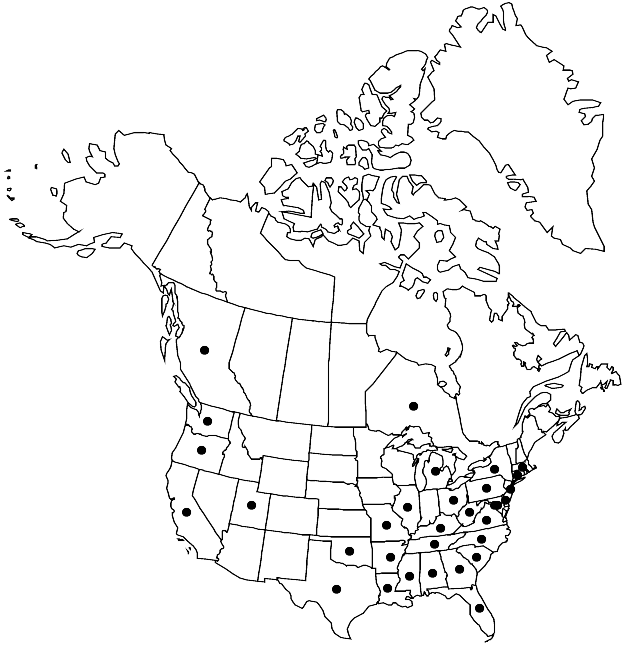Cardamine hirsuta
Sp. Pl. 2: 655. 1753.
Annuals; sparsely hirsute basally (at least on petiole of basal leaves), often glabrous distally. Rhizomes absent. Stems erect, ascending, or decumbent, unbranched or branched basally and/or distally, (0.3–)1–3.5(–4.5) dm, (not flexuous). Basal leaves (persistent to anthesis), rosulate, (5–)8–15(–22)-foliolate, (2–)3.5–15(–17) cm, leaflets petiolulate; petiole 0.5–5 cm, (ciliate); lateral leaflet blade oblong, ovate, obovate, or orbicular, smaller than terminal, margins entire, repand, crenate, or 3-lobed; terminal leaflet (petiolule 0.2–1 cm), blade reniform or orbicular, 0.4–2 cm × 6–30 mm, margins entire, repand, dentate, or 3 or 5-lobed. Cauline leaves 1–4(–6), compound as basal, petiolate, [(0.5–)1.2–5.5(–7) cm, including petiole], leaflets petiolulate; blade base not auriculate; leaflets similar to basal. Racemes ebracteate. Fruiting pedicels erect to ascending, (2–)3–10(–14) mm. Flowers: sepals oblong, 1.5–2.5 × 0.3–0.7 mm, lateral pair not saccate; petals (sometimes absent) white, spatulate, 2.5–4.5(–5) × 0.5–1.1 mm; (stamens usually 4, lateral pair often absent, rarely 5 or 6); filaments 1.8–3 mm; anthers ovate, 0.3–0.5 mm. Fruits linear, (torulose), (0.9–)1.5–2.5(–2.8) cm × (0.8–)1–1.4 mm, (often appressed to rachis); ovules 14–40 per ovary; style 0.1–0.6(–1) mm. Seeds light brown, oblong or subquadrate, 0.9–1.3(–1.5) × 0.6–0.9(–1.1) mm, (narrowly margined). 2n = 16.
Phenology: Flowering Feb–Jul.
Habitat: Roadsides, clearings, disturbed sites, slopes, cedar glades, mixed woods, meadows, fields, waste grounds, damp places, grassy areas
Elevation: 0-700 m
Distribution

Introduced; B.C., Ont., Ala., Ark., Calif., Conn., Del., D.C., Fla., Ga., Ill., Ky., La., Md., Mass., Mich., Miss., Mo., N.J., N.Y., N.C., Ohio, Okla., Oreg., Pa., S.C., Tenn., Tex., Utah, Va., Wash., W.Va., w Eurasia, introduced also in Central America, South America, e Asia (Japan), South Africa, Australia.
Discussion
Herbarium specimens of Cardamine hirsuta have been misidentified as C. oligosperma.
Selected References
None.